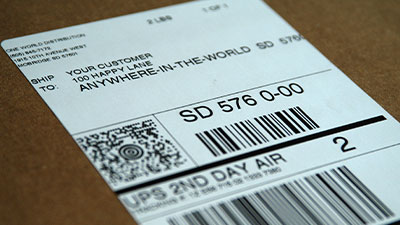“Sorry, that’ll be $3,000 in unexpected duties.”
These words strike fear into every ecommerce seller’s heart. But what if you could legally import thousands of orders duty-free? Enter Section 321 – the little-known customs provision that’s revolutionizing how smart ecommerce businesses handle cross-border shipping.
While most sellers struggle with rising import costs and complex customs procedures, industry leaders use Section 321 to slash their duty expenses to zero and get packages to customers faster. This customs “cheat code” is transforming cross-border ecommerce, particularly for businesses shipping from Canada and Mexico into the U.S. market.
But here’s the catch: get it wrong, and you could face costly delays, seized shipments, and even legal penalties. Get it right, and you’ll have a powerful competitive advantage that can significantly boost your bottom line.
Let’s uncover how successful ecommerce businesses are turning this customs provision into their secret weapon for market dominance.
What is Section 321?
Section 321 allows for tax-free imports on shipments valued at $800 or less, known as Type 86 entries. By taking advantage of Section 321, ecommerce businesses can streamline their supply chain, reduce logistics costs, and improve shipping efficiency.
Why is Section 321 Important for Ecommerce brands?
Ecommerce brands often struggle with tariffs and international shipping costs. Section 321 allows these businesses to avoid certain duties and gain a competitive advantage in the market. The ability to import goods without paying extra taxes means significant savings that can be passed on to customers through lower prices or reinvested into other areas of the business, such as marketing.
How Does Section 321 Benefit Operational Efficiency and Customer Satisfaction?
While most sellers focus on Section 321’s obvious benefit – duty-free imports under $800 – its real power lies in revolutionizing your entire operational framework. Smart businesses aren’t just saving money; they’re using Section 321 to create lightning-fast fulfillment systems that leave competitors in the dust.
Consider this: When your shipments qualify for Section 321, they bypass traditional customs processing. This means no more multi-day delays at the border. No more customers wondering why their tracking hasn’t updated in five days. No more emergency calls to customs brokers. Instead, your packages flow smoothly across the border, often clearing customs in hours instead of days.
For ecommerce businesses, this translates into concrete advantages:
- Your customers get their orders 2-3 days faster on average
- You can maintain smaller inventory levels with faster replenishment
- Your customer service team spends less time handling shipping delays
- You can offer more competitive shipping rates without sacrificing marginsm
Leading brands are taking this even further, strategically positioning fulfillment centers near the border to maximize Section 321 benefits while maintaining rapid delivery times to major U.S. markets. They’re essentially building a competitive moat that combines the cost advantages of foreign sourcing with the speed of domestic fulfillment.
Let’s dive into exactly how successful businesses are architecting their operations to capture these advantages while avoiding common Section 321 pitfalls that can bring your supply chain to a grinding halt.
Understanding Section 321: A Game Changer for Ecommerce Fulfillment
Under the U.S. Customs and Border Protection (CBP) regulations, Section 321 provides a streamlined customs clearance process for low-value shipments. This provision allows ecommerce businesses to import goods into the United States duty-free, provided that each shipment does not exceed the value threshold of $800. The concept of 321 customs is integral to modern ecommerce logistics, offering a simplified import process that significantly reduces costs and administrative burdens.
Low-Value Shipments and Historical Context
The designation of low-value shipments valued at $800 or less is a critical aspect of Section 321 fulfillment. Historically, this provision was introduced to facilitate trade by minimizing the paperwork and duties associated with small-scale cross-border transactions. By allowing these shipments to bypass standard customs procedures, businesses can achieve faster clearance times and reduced operational costs.
Facilitating Seamless Cross-Border Trade
The importance of Section 321 in facilitating seamless cross-border trade cannot be overstated. For ecommerce businesses, particularly those engaged in D2C (Direct-to-Consumer) transactions, utilizing Section 321 provides several strategic advantages:
- Cost Reduction: By eliminating duties on qualifying shipments, businesses can reduce their import expenses significantly.
- Efficiency: The streamlined clearance process improves overall logistics efficiency, leading to faster delivery times.
- Enhanced Customer Experience: With lower international shipping expenses, businesses can offer competitive pricing and enhance customer satisfaction.
Incorporating Section 321 into your logistics strategy means easily navigating complex tariff rules. By understanding the nuances of the 321 code and adhering to CBP guidelines, ecommerce enterprises can unlock new avenues for cost-effective operations.
Ecommerce firms seeking to leverage these benefits must remain cognizant of the typical uses and limitations inherent in Section 321. Awareness of CBP section guidelines, including restrictions on certain goods and shipment frequency, is vital for maximizing the potential of this powerful trade facilitation tool. This knowledge empowers businesses to optimize their supply chains while complying with U.S. regulations.
Eligibility Criteria for Seamless Tax-Free Imports
To leverage the advantages of Section 321 tax-free imports, understanding the eligibility criteria is crucial. This provision allows ecommerce businesses to import goods duty-free, provided certain conditions are met.
Specific Requirements:
- Value Limitation: Shipments must be valued at $800 or less to qualify for Section 321.
- Customs Inspection: The absence of customs inspections is a key benefit, streamlining the import process. However, this requires that all documentation is precise and complete.
- Exclusions:
- Countervailing Duty (CVD) and Anti-Dumping Duty (ADD): Items subject to these duties do not qualify under Section 321.
- Regulated Items: Certain products like alcohol and tobacco are excluded from Section 321 benefits due to regulatory restrictions.
Adhering to these requirements ensures a seamless import process while leveraging the tax-free advantage.
Shipment Frequency Limitation:
Businesses should note the frequency limitation of shipments under Section 321. Only one qualifying shipment per person or entity is allowed per day. This restriction necessitates strategic planning in logistics operations to maximize the benefit without contravening regulations.
Maximizing Benefits: How Section 321 Supercharges Ecommerce Logistics Strategies
Unlocking the potential of Section 321 in your ecommerce logistics strategy can provide a competitive edge through various channels. Here’s how:
1. Substantial Reductions in Import Costs and Duties
Leveraging Section 321 allows you to bypass traditional duties on low-value shipments, effectively minimizing import costs. This exemption is pivotal for maintaining price competitiveness in a saturated market.
2. Faster Shipping Times
By streamlining customs procedures, Section 321 expedites shipping times. Faster clearance means quicker deliveries, enabling your business to meet customer demands efficiently and maintain high satisfaction levels.
3. Improved Overall Logistics Efficiency
The simplification of import processes under Section 321 translates to a more agile supply chain. Ecommerce businesses can optimize inventory management and distribution strategies, reducing bottlenecks and ensuring seamless operations.
4. Enhanced Customer Experience with Lower International Shipping Expenses
Reduced costs from duty-free imports under Section 321 mean lower international shipping expenses. These savings can be passed on to your customers, enhancing their experience by offering more competitive pricing or free shipping options.
Real-World Examples: Successful Implementation of Section 321 in Ecommerce Logistics Strategies
Ecommerce retailers are leveraging Section 321 to streamline customs processes, navigating complex tariffs, particularly those imposed under Section 301 on imports from China.
Strategic Utilization of Section 321
Retailers adeptly implement Section 321 to minimize the financial burden associated with tariffs and duties. For instance, an electronics retailer importing gadgets from China strategically divides larger shipments into smaller consignments, each qualifying under the Section 321 threshold. This method reduces import costs and expedites shipping times, enhancing customer satisfaction through faster delivery.
Case Study: Apparel Brand Success
An apparel company successfully integrated Section 321 into its logistics operations, focusing on small but frequent shipments from overseas manufacturers. By adhering to the de minimis value, the brand effectively bypasses extensive customs clearance procedures, resulting in substantial savings on duties. The streamlined process allowed the company to offer competitive pricing and fulfillment efficiency.
Enhanced Customer Experience
Another notable example is a home goods retailer utilizing Section 321 imports to manage inventory more efficiently. By aligning their ecommerce fulfillment strategy with this provision, they mitigated delays caused by prolonged customs inspections. The result was a seamless shopping experience for their customers with timely deliveries and reduced international shipping expenses.
These examples underscore the transformative potential of Section 321 customs strategies in optimizing logistics and enhancing customer experiences. By capitalizing on this regulatory provision, ecommerce businesses can navigate international trade complexities with agility and confidence.
Practical Tips for Ecommerce Businesses to Implement Section 321 Effectively
Implementing Section 321 effectively in your ecommerce operations requires a methodical approach. Here’s a step-by-step guide to ensure compliance and maximize benefits:
1. Ensure Compliance with Section 321 Regulations
- Proper Documentation: It is crucial that you maintain accurate records of all shipments. This includes invoices, proofs of purchase, and any relevant customs forms.
- Accurate Shipment Classification: Ensure each shipment is classified correctly under the Harmonized Tariff Schedule (HTS). Misclassification can lead to delays or penalties.
2. Leverage Technology Solutions
- Utilize integrated software solutions for tracking and reporting. This technology streamlines the process by automatically identifying shipments that qualify for Section 321, reducing manual errors and ensuring timely compliance.
- Implement systems that offer real-time visibility into shipping data, ensuring your logistics team can make informed decisions quickly.
3. Collaborate with Experienced Logistics Providers
- Partnering with logistics experts who understand the intricacies of customs regulations is essential. These providers can help navigate complex requirements and avoid potential pitfalls.
- Experienced partners ensure compliance and optimize logistics strategies to leverage the full benefits of Section 321, such as reduced import costs and faster delivery times.
Not only will you slash thousands in import duties, but you’ll also delight customers with faster deliveries and build a leaner, more profitable operation. The businesses that master Section 321 aren’t just saving money – they’re creating sustainable competitive advantages that are hard for competitors to match.
Common Misconceptions Debunked: Clarifying Myths Surrounding Section 321 Eligibility and Usage
Let’s bust some myths about Section 321. While top ecommerce brands are using this provision to save thousands on import duties, too many businesses are leaving money on the table because of outdated or flat-out wrong information. These misconceptions aren’t just costly – they’re keeping smart sellers from building more profitable operations. Before you make decisions about your cross-border strategy, let’s clear up the most expensive myths that might be holding your business back.
Misconception #1: Shipment Limitations
A common myth is that Section 321 has strict limits that make it impractical for growing ecommerce businesses. In reality, while there is a rule limiting shipments to one per person per day to qualify, this doesn’t have to restrict your operations if managed strategically. Smart businesses are structuring their fulfillment networks to work within these parameters while still handling high order volumes. 
For instance, you can coordinate shipments across multiple fulfillment centers, each processing one Section 321 entry per customer per day. Leading brands even maintain dedicated facilities near the border specifically to maximize these duty-free benefits. The key is building systems that automatically route orders to optimize for both Section 321 qualification and delivery speed.
Misconception #2: Eligibility Criteria
Confusion often arises about what qualifies as a low-value shipment under Section 321. The regulation allows for duty-free entry of goods valued at $800 or less, but it’s crucial to understand that not all goods qualify. Items subject to Countervailing Duty (CVD), Anti-Dumping Duty (ADD), and regulated goods like alcohol and tobacco are excluded. Getting familiar with these specifics will ensure compliance and prevent costly mistakes.
Understanding CBP Guidelines
It’s important to align your strategies with U.S. Customs and Border Protection (CBP) guidelines. The CBP frequently updates regulations, so staying informed helps avoid potential problems during the import process. Regularly checking CBP resources or working with a knowledgeable logistics provider can protect against unintentional non-compliance.
Importance of Clarity in Regulations
By clearly understanding Section 321 regulations, you can streamline cross-border trade operations effectively. Discarding myths and thoroughly understanding eligibility criteria positions your ecommerce business to seamlessly take advantage of tax-free import opportunities, improving both cost-efficiency and operational flexibility.
Embracing Section 321 for Cost-Effective Cross-Border Trade in Ecommerce Business
Section 321 is more than just a regulatory provision; it’s a strategic advantage for your ecommerce business. By leveraging its benefits, you unlock the potential for significant cost savings and streamlined cross-border trade operations. Understanding the summary of Section 321 benefits reveals how this tool can transform your logistics approach:
- Cost Reduction: Exempting low-value shipments from duties minimizes expenses.
- Efficiency Enhancement: Faster customs clearance accelerates delivery times.
- Customer Satisfaction: Lower shipping costs without compromising service quality.
Embrace this powerful tool to optimize your fulfillment strategies. As an ecommerce professional, recognizing these advantages positions you ahead of the competition, ensuring you capitalize on every opportunity for growth and efficiency.
Next Steps for Businesses include integrating Section 321 into your logistics framework. Begin with a thorough review of your current import processes to identify areas where Section 321 could reduce bottlenecks. Engage with experienced logistics providers to ensure compliance and maximize benefits. Implementing these steps will fortify your position in the competitive ecommerce landscape, propelling your business towards sustained success and expansion.
Need Help Lowering Fulfillment Costs? Book a Logistics Consultation Today!
Unlock the full potential of your ecommerce operations by scheduling a logistics consultation with our team of experts at One World Direct. We specialize in assessing your current fulfillment processes and discovering how leveraging Section 321 can drive cost savings and operational efficiency.
Why Schedule a Consultation?
- Fulfillment Audit: Gain insights into your logistics strategies and identify areas for improvement.
- Section 321 Ecommerce Benefits: Explore quick wins in reducing import costs and streamlining cross-border trade.
- Tailored Solutions: Receive personalized advice from industry specialists to enhance your fulfillment operations.
- Improve Customer Service: Integrate our ecommerce call center services with our American agents to improve your customer service.
- New Revenue Opportunity with P2C Fulfillment: Personalized-to-Consumer fulfillment transforms traditional 3PL costs into a profit center by letting you offer personalization services for which your customers will pay a premium. Unlike standard fulfillment, which is always an expense, P2C turns each personalized order into pure profit since customers cover the costs while getting the custom experience they want. Integrate our ecommerce personalization software and increase average order values and conversions with P2C fulfillment, offered exclusively by OWD.
Book your consultation and start transforming your logistics strategy. If you want to learn more about general tariff strategies, bookmark our handy resource pages below:




